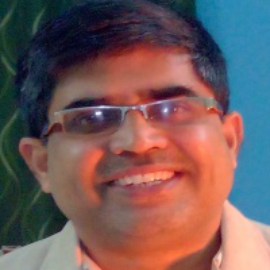International Journal of Intelligent Systems and Applications (IJISA)
IJISA Vol. 11, No. 9, 8 Sep. 2019
Cover page and Table of Contents: PDF (size: 501KB)
PID Controller Design for SOPDT using Direct Synthesis Method
Full Text (PDF, 501KB), PP.56-64
Views: 0 Downloads: 0
Author(s)
Index Terms
Maclaurin series, maximum sensitivity, PID, direct synthesis, SOPDT
Abstract
Direct synthesis method based PID controller was proposed for the second order plus dead time stable process having a zero in the numerator. The desired closed loop transfer function was considered as a second order time delay model and the Maclaurin series expansion technique was used to convert the obtained controller into the ideal form of the PID controller. The tuning parameter α was selected in such a way that gives the robustness level i.e. maximum sensitivity Ms value in the range of 1.2-1.8 which was the same as other recent tuning methods. The proposed method was applied to six different first and second order time delay process. The closed-loop performance in term of various performance indices such as settling time (ts), rise time (tr), Overshoot (%OS), and the time integral error indices such as IAE, ISE, and ITAE was compared to other similar design approaches. The comparative results show that the proposed method was superior to other methods.
Cite This Paper
Munna Kumar, Ram Sharan Singh, "PID Controller Design for SOPDT using Direct Synthesis Method", International Journal of Intelligent Systems and Applications(IJISA), Vol.11, No.9, pp.56-64, 2019. DOI:10.5815/ijisa.2019.09.06
Reference
[1]K. J. Åström and T. Hägglund, "The future of PID control," Control engineering practice, vol. 9, pp. 1163-1175, 2001.
[2]J. G. Ziegler and N. B. Nichols, "Optimum settings for automatic controllers," trans. ASME, vol. 64, 1942.
[3]G. Cohen and Coon, "Theoretical consideration of retarded control," Trans. Asme, vol. 75, pp. 827-834, 1953.
[4]K. J. Ǻström and T. Hägglund, "PID controllers: theory, design, and tuning," Instrument Society of America, Research Triangle Park, NC, vol. 10, 1995.
[5]B. D. Tyreus and W. L. Luyben, "Tuning PI controllers for integrator/dead time processes," Industrial & Engineering Chemistry Research, vol. 31, pp. 2625-2628, 1992.
[6]D. E. Rivera, M. Morari, and S. Skogestad, "Internal model control: PID controller design," Industrial & engineering chemistry process design and development, vol. 25, pp. 252-265, 1986.
[7]C. A. Smith and A. B. Corripio, Principles and practice of automatic process control vol. 2: Wiley New York, 1985.
[8]A. S. Rao, V. Rao, and M. Chidambaram, "Direct synthesis-based controller design for integrating processes with time delay," Journal of the Franklin Institute, vol. 346, pp. 38-56, 2009.
[9]A. A. Nasution, J.-C. Jeng, and H.-P. Huang, "Optimal H 2 IMC-PID Controller with Set-Point Weighting for Time-Delayed Unstable Processes," Industrial & Engineering Chemistry Research, vol. 50, pp. 4567-4578, 2011.
[10]M. Shamsuzzoha and M. Lee, "PID controller design for integrating processes with time delay," Korean Journal of Chemical Engineering, vol. 25, pp. 637-645, 2008.
[11]V. M. Alfaro, R. Vilanova, and O. Arrieta, "Maximum Sensitivity Based Robust Tuning for Two-Degree-of-Freedom Proportional− Integral Controllers," Industrial & Engineering Chemistry Research, vol. 49, pp. 5415-5423, 2010.
[12]O. Arrieta and R. Vilanova, "Simple Servo/Regulation Proportional–Integral–Derivative (PID) Tuning Rules for Arbitrary M s-Based Robustness Achievement," Industrial & Engineering Chemistry Research, vol. 51, pp. 2666-2674, 2012.
[13]K. G. Begum, A. S. Rao, and T. Radhakrishnan, "Maximum sensitivity based analytical tuning rules for PID controllers for unstable dead time processes," Chemical Engineering Research and Design, vol. 109, pp. 593-606, 2016.
[14]P. R. Dasari, M. Chidambaram, and A. S. Rao, "Simple method of calculating dynamic set-point weighting parameters for time delayed unstable processes," IFAC-PapersOnLine, vol. 51, pp. 395-400, 2018.
[15]Y. Lee, S. Park, M. Lee, and C. Brosilow, "PID controller tuning for desired closed‐loop responses for SI/SO systems," Aiche journal, vol. 44, pp. 106-115, 1998.
[16]V. Vijayan and R. C. Panda, "Design of PID controllers in double feedback loops for SISO systems with set-point filters," ISA transactions, vol. 51, pp. 514-521, 2012.
[17]C.-q. Yin, H.-t. Wang, Q. Sun, and L. Zhao, "Improved Cascade Control System for a Class of Unstable Processes with Time Delay," International Journal of Control, Automation and Systems, vol. 17, pp. 126-135, 2019.
[18]M. Irshad and A. Ali, "Optimal tuning rules for PI/PID controllers for inverse response processes," IFAC-PapersOnLine, vol. 51, pp. 413-418, 2018.
[19]C. Grimholt and S. Skogestad, "Optimal PI and PID control of first-order plus delay processes and evaluation of the original and improved SIMC rules," Journal of Process Control, vol. 70, pp. 36-46, 2018.
[20]M. Chidambaram and N. Saxena, "Refined Ziegler–Nichols Tuning Method for Unstable SISO Systems," in Relay Tuning of PID Controllers, ed: Springer, 2018, pp. 127-150.
[21]K. G. Begum, T. Radhakrishnan, A. S. Rao, and M. Chidambaram, "IMC based PID controller tuning of series cascade unstable systems," IFAC-PapersOnLine, vol. 49, pp. 795-800, 2016.
[22]K. G. Begum, A. S. Rao, and T. Radhakrishnan, "Optimal controller synthesis for second order time delay systems with at least one RHP pole," ISA Transactions, vol. 73, pp. 181-188, 2018.
[23]K. G. Begum, A. S. Rao, and T. Radhakrishnan, "Enhanced IMC based PID controller design for non-minimum phase (NMP) integrating processes with time delays," ISA transactions, vol. 68, pp. 223-234, 2017.
[24]M. Shamsuzzoha, "A unified approach for proportional-integral-derivative controller design for time delay processes," Korean Journal of Chemical Engineering, vol. 32, pp. 583-596, 2015.
[25]M. Shamsuzzoha, "IMC based robust PID controller tuning for disturbance rejection," Journal of Central South University, vol. 23, pp. 581-597, 2016.
[26]M. Shamsuzzoha and M. Lee, "Design of advanced PID controller for enhanced disturbance rejection of second‐order processes with time delay," AIChE Journal, vol. 54, pp. 1526-1536, 2008.
[27]M. Shamsuzzoha and S. Skogestad, "The setpoint overshoot method: A simple and fast closed-loop approach for PID tuning," Journal of Process Control, vol. 20, pp. 1220-1234, 2010.
[28]G. Prashanti and M. Chidambaram, "Set-point weighted PID controllers for unstable systems," Journal of the Franklin Institute, vol. 337, pp. 201-215, 2000.
[29]T. Radhakrishnan, "Performance assessment of control loops involving unstable systems for set point tracking and disturbance rejection," Journal of the Taiwan Institute of Chemical Engineers, 2018.
[30]M. Chidambaram, "Set point weighted PI/PID controllers," Chemical Engineering Communications, vol. 179, pp. 1-13, 2000.
[31]D. Chen and D. E. Seborg, "PI/PID controller design based on direct synthesis and disturbance rejection," Industrial & engineering chemistry research, vol. 41, pp. 4807-4822, 2002.
[32]S. Skogestad and I. Postlethwaite, Multivariable feedback control: analysis and design vol. 2: Wiley New York, 2007.
[33]A. Anusha and A. S. Rao, "Design and analysis of IMC based PID controller for unstable systems for enhanced closed loop performance," IFAC Proceedings Volumes, vol. 45, pp. 41-46, 2012.
[34]M. Shamsuzzoha and M. Lee, "IMC− PID Controller Design for Improved Disturbance Rejection of Time-Delayed Processes," Industrial & Engineering Chemistry Research, vol. 46, pp. 2077-2091, 2007.
[35]S. Skogestad, "Simple analytic rules for model reduction and PID controller tuning," Journal of process control, vol. 13, pp. 291-309, 2003.
[36]S. Saxena and Y. V. Hote, "Internal model control based PID tuning using first-order filter," International Journal of Control, Automation and Systems, vol. 15, pp. 149-159, 2017.
[37]Q.-G. Wang, C. C. Hang, and X.-P. Yang, "Single-loop controller design via IMC principles," Automatica, vol. 37, pp. 2041-2048, 2001.

